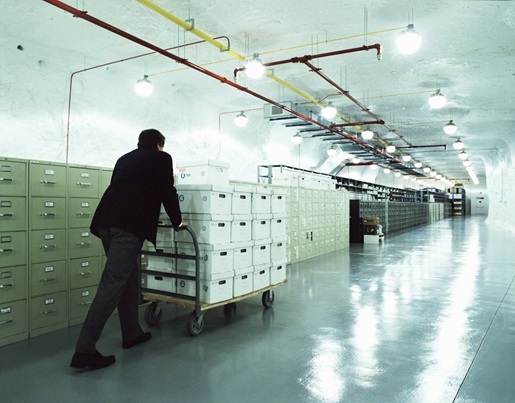From the economic to the environmental, paperless filing systems benefits their users in myriad ways
In 2023, more and more businesses are taking their workflows digital. Most traditional companies produce thousands of paper pages. So, such a transition may seem counterproductive.Those papers may be required to be maintained for legal and compliance reasons. Many also need to be easily accessible. Office workers spend around 60% of their time working with documents. Yet moving to a paperless filing system is an increasingly strategic decision. Why?
For many compelling reasons. Physical documents can be rife with shortcomings. The process of organizing them can present many opportunities for human error. Correcting filing mistakes eats up productive time. So does retrieving and sharing paper documents in the course of business. Paper can also be an expensive and wasteful commodity vulnerable to damage. Switching to a paperless filing system can address many of these problems even as it introduces new advantages. Curious about the benefits of paperless filing systems? Keep reading.
Adopting a paperless approach is an excellent way to futureproof your business. Read our complete guide to find out what you need to know before you get started.
Jump to a section:
Benefits of a paperless filing system cost of paper rising 6-15% in 2021
Material cost savings
Because they use so much paper, businesses often take its price for granted. That’s a dangerous and costly dynamic. Gartner estimates that as much as 3% of the average company’s revenue goes to paper. That includes printing, filing, and file maintenance. Furthermore, the average office worker uses 10,000 sheets of paper per year. With the cost of paper on the rise, all those pages add up.
Consider the difference when moving to a paperless filing system full of paperless documents and paperless forms. You may no longer need to buy those endless reams of paper. You can also spend less on other materials. Paper clips, file folders, staplers, staples, filing cabinets, and more could shrink in cost. Printer maintenance, ink cartridges, and other expenses tied to printers also can be reduced. That can total to impressive savings.
Physical space savings
Paperless filing systems can save on more than materials. Commercial real estate can also be costly. Spending on space for document storage may contribute little to revenue. But compliance and legal concerns can force businesses to do just that. Filing cabinets take up space and can be around 17 square feet in size. This could also grow in number as the business expands and needs more filing cabinets to store records and documents. That takes up even more space.
Shifting to a paperless filing system allows you to move those stored items to the cloud. With the free space, you can install more employee desks. You could provide employees with amenities that boost morale and productivity. Or you could find some other novel use for the space. No matter how you use it, it will likely be more productive than the filing cabinets were.
Did You Know?:The fi-8170 can scan up to 70 pages per minute and 10,000 pages per day. Click here to learn more.
Expedited information lookup
A study by McKinsey shows office workers spend around 19% of their workweeks looking for information. This may be the best opportunity for paperless filing systems to improve efficiency. Time spent rifling through physical papers quickly adds up. On the other hand, instantly finding the correct document or the right information can power faster work.
Here’s an example. One study showed workers at a company spent five hours per week looking for information. When the company digitized its workflows, it cut that time down to three hours per week. That meant a 40% improvement in worker efficiency. Moving to a paperless filing system could create a similar efficiency opportunity for your business.
Instant remote document sharing
In addition to finding documents, employees must share them and their contents. That sharing can be done with other members of the team. It can also be done with external stakeholders. Either way, it can become tedious. Physical documents shared within the workplace require walking around the office. That can mean climbing stairs and crossing long office floors there and back. If the document must leave the office, mailing or even faxing it can be finicky and slow. Mail gets lost. Fax machines jam. And if the document must be filled out and returned, timelines can extend even further.
Sharing paperless documents and paperless forms, meanwhile, can take place instantaneously. In just a few clicks, one worker can pass another the document they need. This is especially helpful if your business has multiple locations, remote workers, or external collaborators. Faster sharing means fewer information bottlenecks. Fewer bottlenecks often means greater productivity.
Enhanced data security
Keeping paper documents safe means storing them in locked containers or locked rooms. Many businesses even opt for additional security measures. These can include security cameras and personnel. Each of these carries an extra price tag. And when workers need access to secure areas, granting it could take additional time. IDs usually need to be checked. Doors may need to be unlocked. And the whole process must be performed in reverse to re-file and secure these documents.
The best paperless filing system for security-focused businesses include security features to address these challenges. User passwords prevent unauthorized users from gaining access to sensitive paperless documents. So do customizable user permissions. Data encryption protects sensitive data from misuse. These features help keep your business compliant with industry standards and applicable laws and regulations. Automatically generated audit histories and version control can help do the same. They also can bolster your audit preparedness. Finally, document lifecycle automation can ensure documents are handled, archived, and destroyed properly.
Protection from disaster
Physical documents can be vulnerable to natural disasters. Floods and fires can destroy critical information. This can cost a business more than the time and materials to recover those documents. It can also cause lapses in compliance that can lead to potential fines and other legal repercussions. By moving to a paperless filing system and storing information in the cloud, you can help insulate your business from calamity.
Reduced environmental impact
Every sheet of standard A4-sized paper requires 2-13 liters of water to produce. That adds up when the average office worker uses 10,000 such pages per year. The US alone consumes around 66 million tons of paper each year. That’s part of why the pulp and paper industry is the largest consumer of water in Western countries. And paper production is more than resource-intensive. It also releases millions of pounds of pollution each year.
By switching to a paperless filing system, your business can massively reduce its paper use. That can have a dramatic effect on your carbon footprint. It can also contribute to a larger trend of decreased paper use. That paves the way for a more sustainable future.
Did You Know?:The fi-7700 uses automatic skew correction and active separation to capture every relevant detail and minimize paper jams. Click here to learn more.
Our recommendation: fi-8170
Those in the market for a paperless filing system have no shortage of options. We take great pride in having spent the last 50+ years researching, designing, and developing some of the most advanced and powerful electronics in the world, including our professional grade fi Series scanners.
Built to purpose for the most demanding document handling jobs, fi and SP scanners are capable of processing thousands of pages per day at the highest levels of accuracy. Their intuitive integration capabilities with all existing work suites minimize time-to-value for businesses looking to invest in tools that will pay dividends for years to come.
If you’re going paperless, you’ll need a high-powered scanner. It’s the best way to create paperless documents and paperless forms from physical ones. And the fi-8170 is among the fastest and most powerful in the business. It can scan up to 70 double-sided pages per minute with its 100-page automatic document feeder (ADF). Its heavy-duty design ensures your business faces minimal downtime, and Intelligent Paper Protection helps to prevent paper jams through sound and image detection technology. Ricoh also offers a flatbed version of the scanner, the fi-7700, for bound, fragile, and dogeared documents. Click here to learn more or shop the rest of our production scanner line.
Note: Information and external links are provided for your convenience and for educational purposes only, and shall not be construed, or relied upon, as legal or financial advice. PFU America, Inc. makes no representations about the contents, features, or specifications on such third-party sites, software, and/or offerings (collectively “Third-Party Offerings”) and shall not be responsible for any loss or damage that may arise from your use of such Third-Party Offerings. Please consult with a licensed professional regarding your specific situation as regulations may be subject to change.









